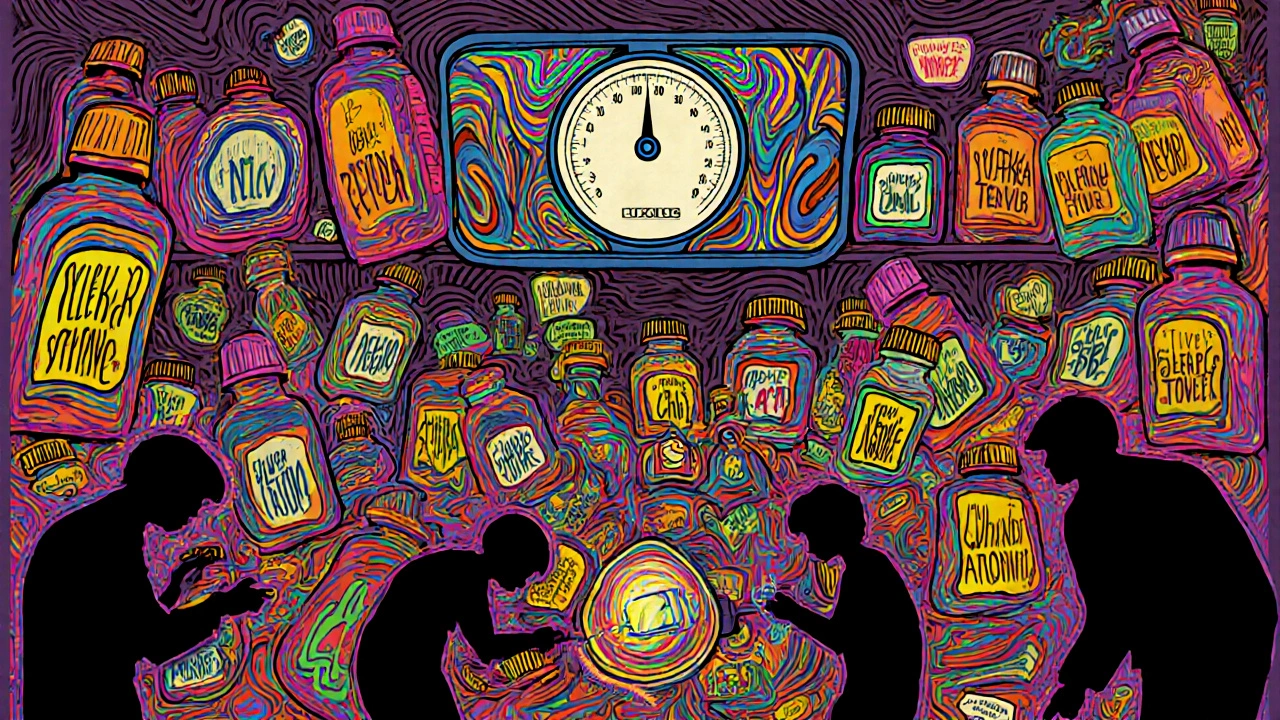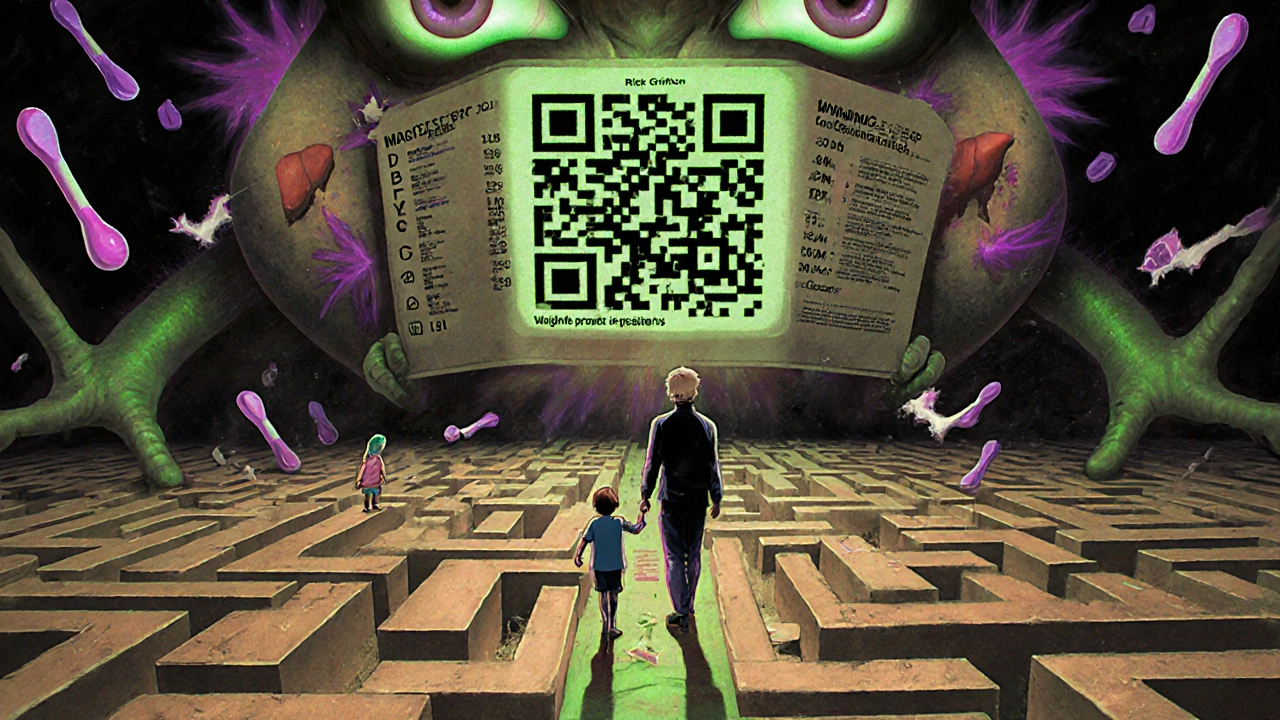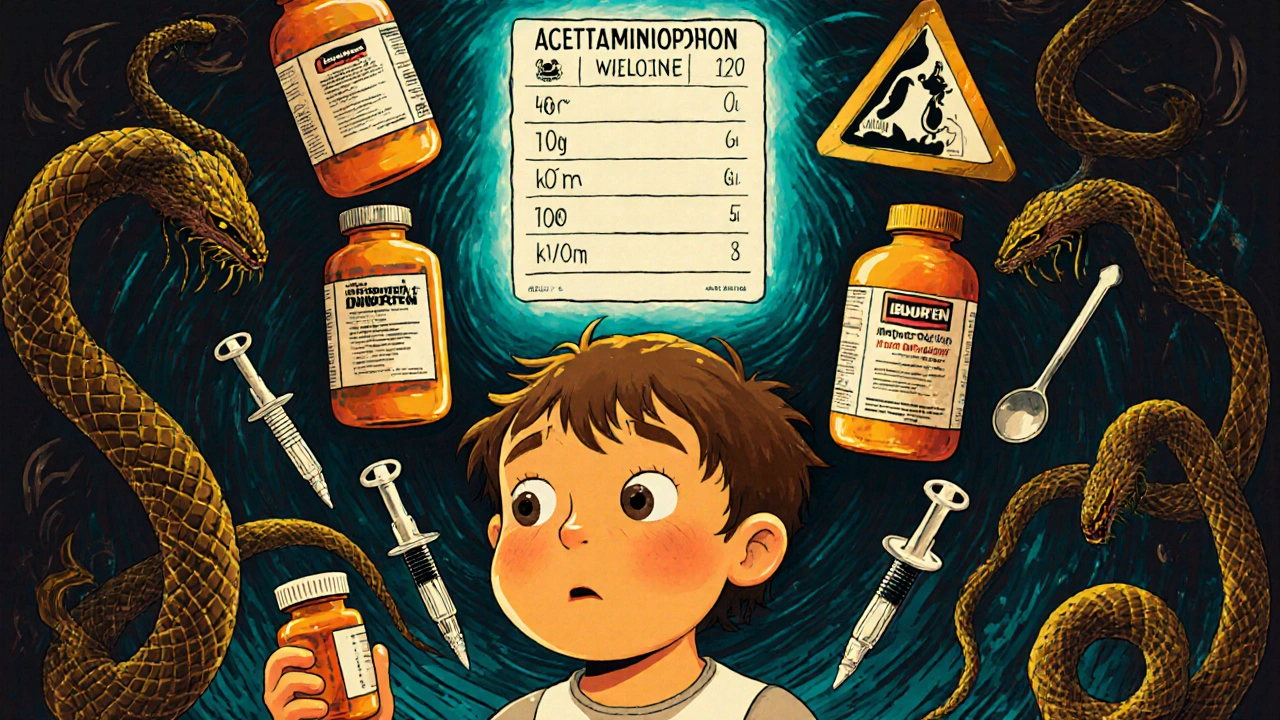Every year, over 1.4 million children in the U.S. end up in emergency rooms because of medication errors - and most of them happen because parents misread the label. It’s not about being careless. It’s about confusing symbols, unclear instructions, and assuming age is enough to guess the right dose. But here’s the truth: weight is the only thing that matters when giving OTC medicine to a child. Age? It’s a backup. If you don’t know your child’s weight, you’re guessing - and guessing with medicine can be dangerous.
Why Weight Matters More Than Age
Your child’s body doesn’t process medicine the same way an adult’s does. A 20-pound toddler metabolizes acetaminophen differently than a 60-pound kindergartener. That’s why the FDA, the American Academy of Pediatrics (AAP), and hospitals like Johns Hopkins all agree: weight-based dosing is safer. A 2019 study in Clinical Pediatrics found that using age alone led to dosing errors in 23% of cases - 15% were too low, 8% were too high. Too little medicine won’t help. Too much? It can cause liver damage, kidney stress, or even poisoning.Acetaminophen (Tylenol) overdoses are the #1 cause of acute liver failure in children under 12. The Acute Liver Failure Study Group recorded 47 cases in just two years - all from accidental overdose. Most of those happened because parents didn’t realize they were giving two medicines with the same active ingredient. One was for fever. The other was for cold symptoms. Both had acetaminophen. And both were given at the same time.
What to Look for on the Label
Every OTC children’s medicine label must now follow strict federal rules. Here’s what you need to check every single time:- Active ingredient: Is it acetaminophen? Ibuprofen? Diphenhydramine (Benadryl)? Never assume. Names vary by brand.
- Concentration: This is critical. Liquid acetaminophen is now standardized at 160 mg per 5 mL (32 mg/mL). Ibuprofen is 100 mg per 5 mL. But older bottles or infant drops might say 80 mg per 0.8 mL. If you use the wrong syringe, you’ll give 5x too much.
- Dosing by weight: Look for a chart that lists pounds or kilograms. Common ranges: 12-17 lbs, 18-23 lbs, 24-35 lbs, 36-47 lbs, and so on. If your child weighs 27 lbs, use the 24-35 lb column - never round up.
- Dosing by age: This is secondary. Only use it if you don’t know your child’s weight. Even then, it’s less accurate.
- Frequency: Acetaminophen: every 4 hours. Ibuprofen: every 6-8 hours. Never give more than 5 doses of acetaminophen in 24 hours. Ibuprofen maxes out at 4 doses.
- Warnings: Look for phrases like “Do not use under 6 months” (ibuprofen) or “Do not combine with other medicines containing acetaminophen.”
And here’s something most parents miss: milliliters (mL) are the only acceptable unit. No teaspoons, no tablespoons. Those are unreliable. A kitchen teaspoon can hold anywhere from 4 to 7 mL - that’s a 40% error. The FDA banned “tsp” and “tbsp” on labels in 2011. If you see them, the product may be outdated or mislabeled.
Acetaminophen vs. Ibuprofen: Know the Difference
These two are the most common. But they’re not interchangeable.| Feature | Acetaminophen (Tylenol) | Ibuprofen (Advil, Motrin) |
|---|---|---|
| Minimum age | 2 months (with pediatrician approval) | 6 months |
| Max doses per day | 5 | 4 |
| Dosing interval | Every 4 hours | Every 6-8 hours |
| Concentration (liquid) | 160 mg / 5 mL | 100 mg / 5 mL |
| Primary risk | Liver damage from overdose | Stomach irritation, kidney stress |
| Best for | Fever, mild pain | Fever, inflammation, swelling |
Let’s say your child weighs 30 lbs. For acetaminophen, you’d give 5 mL. For ibuprofen, you’d also give 5 mL. But the amount of medicine is different: 160 mg vs. 100 mg. That’s why you can’t swap them 1:1. If you do, you’re either underdosing or overdosing.
What About Chewables and Tablets?
Chewable tablets are trickier. A children’s chewable acetaminophen tablet is usually 80 mg. But a regular tablet is 160 mg. If your child weighs 40 lbs and you give them one 160 mg tablet, you’re giving the full dose. But if you think it’s a chewable and give two, you’ve doubled the dose. Always check the label for “mg per tablet.”Benadryl (diphenhydramine) is another trap. Liquid is 12.5 mg per 5 mL. Tablets are 25 mg. The AAP says: Never give Benadryl to kids under 2 unless a doctor says so. It can cause dangerous drowsiness, breathing problems, or even seizures in young children.

How to Measure Correctly
You need the right tool. Not a spoon. Not a shot glass. Not a baby bottle.- Use the plastic syringe that comes with the bottle.
- Or use a medicinal dosing cup marked in mL.
- Never use a kitchen spoon - even if it says “teaspoon.”
- Hold the syringe at eye level. Don’t tilt it. The liquid should sit exactly on the line.
St. Louis Children’s Hospital tested 100 parents using kitchen spoons. 78% gave the wrong amount. One parent gave 7 mL instead of 5 mL - that’s 40% too much. Another gave 15 mL thinking it was a tablespoon. That’s 3x the dose.
What If You Don’t Know Your Child’s Weight?
Most parents don’t weigh their kids regularly. That’s okay. But here’s what to do:- Use the age-based chart on the label - but only as a last resort.
- When in doubt, choose the lower weight range. If your child is 28 lbs and the chart has 24-35 lbs, use that. Don’t jump to 36-47 lbs.
- Ask your pediatrician for a weight estimate. Many clinics offer free weigh-ins.
- Download a free dosing calculator. Hyde Park Pediatrics’ tool has been used over 17,000 times with 98% accuracy.
Pro tip: Write your child’s current weight on the medicine bottle with a marker. That way, next time you’re in a rush at 2 a.m., you don’t have to guess.
Watch Out for Hidden Acetaminophen
This is the #1 mistake. Cold, flu, and allergy medicines often contain acetaminophen. So does some cough syrup. If you give Tylenol and a cold medicine at the same time - even if they’re different brands - you’re doubling the dose.Always read the “Active Ingredients” section. If you see “acetaminophen” on more than one bottle, don’t give both. Pick one. And stick to it.

What to Do If You Make a Mistake
If you gave too much - even a little too much - call Poison Control immediately: 1-800-222-1222 (U.S.) or your local emergency number. Don’t wait for symptoms. Liver damage from acetaminophen can take 24-48 hours to show up.If you’re unsure, call your pediatrician. Don’t Google it. Don’t ask Facebook. Call a professional.
What’s Changing in 2025?
The FDA is pushing for even clearer labels. By 2025, most children’s OTC meds will have:- QR codes that link to video instructions
- Secondary measurements in syringe units (0.2 mL increments)
- Bolder “Liver Warning” labels for kids under 12
These changes are happening because 35% of parents still misread mL measurements, even after 15 years of standardization. The goal? Zero errors. It’s not impossible - but it needs you to be careful.
Final Checklist Before Giving Medicine
Before you open the bottle, ask yourself:- Do I know my child’s weight? If not, am I using the age chart correctly?
- Is this the right active ingredient? Is it acetaminophen or ibuprofen?
- What’s the concentration? Is it 160 mg/5 mL or something else?
- Am I using the syringe or dosing cup - not a spoon?
- Am I giving this with another medicine? Check for hidden acetaminophen.
- Is my child under 6 months? If yes, and it’s ibuprofen - don’t give it.
- Am I giving more than 5 doses of acetaminophen in 24 hours?
If you can answer yes to all of these, you’re doing it right. Medication safety isn’t about being perfect. It’s about being consistent. One wrong dose can change everything. But with the right tools and habits, you can keep your child safe.
Can I use a kitchen teaspoon to measure children’s medicine?
No. A kitchen teaspoon holds between 4 and 7 milliliters, depending on the spoon. The standard dose for children is usually 5 mL. Using a kitchen spoon can give your child 20-40% too much medicine - enough to cause overdose. Always use the syringe or dosing cup that comes with the medicine.
What should I do if I give my child too much acetaminophen?
Call Poison Control immediately at 1-800-222-1222 (U.S.) or your local emergency number. Do not wait for symptoms. Acetaminophen overdose can damage the liver without showing signs for 24-48 hours. Even a small overdose can be dangerous in young children.
Can I give ibuprofen to a 4-month-old baby?
No. Ibuprofen is not approved for infants under 6 months of age. The FDA requires this warning on all ibuprofen labels. For babies under 6 months with a fever, use acetaminophen only if your pediatrician says it’s okay. Never give ibuprofen to a child under 6 months unless directed by a doctor.
Why do some children’s medicines say “infant drops” and others say “children’s liquid”?
Infant drops are more concentrated: 80 mg per 0.8 mL. Children’s liquid is less concentrated: 160 mg per 5 mL. They’re not interchangeable. Using the wrong syringe or measuring tool can lead to a 5x overdose. Always use the syringe that comes with the product. Never swap syringes between infant drops and children’s liquid.
Is it safe to give two different OTC medicines at the same time?
Only if you’re certain they don’t contain the same active ingredient. Many cold, flu, and allergy medicines include acetaminophen or ibuprofen. Giving Tylenol and a cold medicine together can cause a dangerous overdose. Always check the “Active Ingredients” list on both labels before giving more than one medicine.
Should I wake my child up to give them medicine at night?
No, unless they’re in serious pain or have a very high fever. Sleep is healing. If your child is sleeping comfortably, let them rest. You don’t need to wake them for every dose. Just make sure you don’t go more than 4 hours between acetaminophen doses or 6-8 hours between ibuprofen doses during waking hours.
What if my child’s weight falls between two ranges on the chart?
Always round down to the lower weight range. For example, if your child weighs 37 lbs and the chart lists 36-47 lbs and 48-59 lbs, use the 36-47 lbs dose. Overdosing is more dangerous than underdosing. If the medicine doesn’t help, talk to your pediatrician before giving more.

